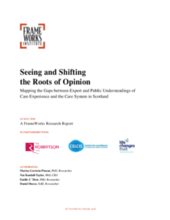

Displaying 1041 - 1050 of 1633
This project explores storytelling tools for the collaborative work with persons in vulnerable situation, in this case, a group of unaccompanied minors from Afghanistan living in Umeå, Sweden.
This study aims to confirm the proof of concept within foster carers and to explore the potential risks associated with intent to continue fostering, overall job satisfaction and psychological factors (avoidant coping) that could be targets for interventions.
"Thousands of 'pinball kids' are being shifted around the care system and between schools, putting them at risk of being excluded, groomed and recruited into gangs" in the UK, according to this article from the Guardian.
This thesis took on a meta-analytical approach to examine sources of heterogeneity between studies evaluating the effect of foster care on adaptive functioning, cognitive functioning, externalizing behavior, internalizing behavior, and total problems behavior.
The number of people who have gone missing from residential care in London, UK rose 34% from 2013 to 2017, according to this article from BBC News.
The purpose of this paper is to explore the reasons for unintended placement disruptions in foster care.
This report charts public understandings of childhood, parenting and the care system, and examines how these ways of thinking complicate, and occasionally facilitate, communicating about care issues.
This article from the Guardian highlights findings from recent research which indicates the "children in care are six times more likely to be cautioned or convicted of a crime than other young people."
"Fifteen years after leaving the care system, almost everyone I knew then was reluctant to talk. Why had so many of them struggled or fallen off the map?" writes Daniel Lavelle in the Guardian.
The aim of this research is to examine the relation between school attachment and school achievement and foster care placement.


